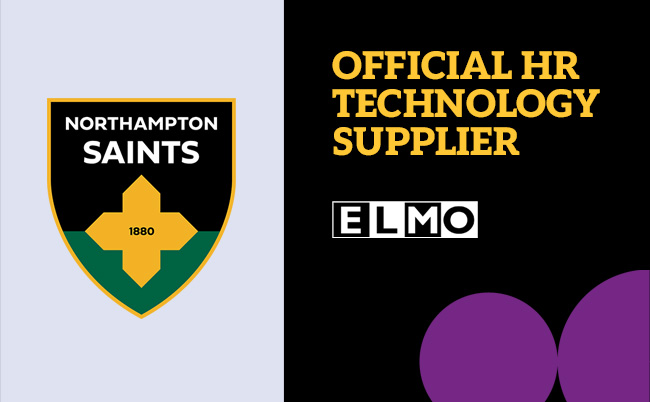7 Benefits of Talent Management Systems for Businesses

What is talent management?
Talent management is the strategic process of recruiting, developing and retaining a productive workforce to improve business performance and competitiveness.
There are plenty of priorities and processes this may involve. Between recruiting the right candidate, offering a great first impression, onboarding and more – there’s plenty for the HR team to get right, both before and after the offer letter is sent.
Managing these competing priorities can often feel like a juggling act – and one that gets increasingly complex the more the company grows. But the right technology can really help with this.
Here are the seven main ways that a talent management system can make life easier for HR teams and new recruits.
The advantages of talent management systems
1. Connecting and sharing data
Siloed HR data is difficult to reach, analyse and compare. Also, clicking between different apps all day isn’t a great use of your team’s time. It can create inefficiencies and human error, with vital check-ins, performance reviews and learning opportunities being missed from employee to employee.
An integrated talent management system solves this problem by creating a single, centralised store for information about an employee’s role, salary, job description, tenure, performance reviews, goals, skills and much more. This gives you a better understanding of each employee and how they relate to the wider business, which is essential for effective decision-making and talent planning.
Integrated talent management systems help break down functional silos, so organisations can:
- Track employees seamlessly from hire to retire.
- Identify skills gaps and development opportunities.
- Connect performance to compensation management and career growth.
- Develop robust succession plans based on accurate data.
2. Automate manual recruiting and onboarding workflows
The quality of your recruiting and onboarding processes can make a huge difference to how likely you are to secure a candidate – and how long they stay with the business once you have. According to Gallup, only 12% of employees strongly agree that their organisation does a great job of onboarding.
While this is surprising, it does mean there’s a unique opportunity for those employers who can get this right. So how do you do that?
Much of the challenge can be reduced by ensuring a connected, consistent and smooth experience for employees. This means avoiding issues such as:
- Inconsistent and delayed communications.
- Meetings or interviews getting missed or wrongly scheduled.
- Contract negotiations going back-and-forth.
- Getting conflicting information from the recruiter, line manager and HR team.
- Having no onboarding information on day one.
Problems like this can hugely impact the employee experience. But with the right technology, you can define automated workflows and processes to ensure they’re completed in the right way, every time. This can include:
- Automated job postings.
- Applicant progress tracking.
- Automated communications, task delegation and meeting scheduling.
- Email communication templates.
This helps ensure that these processes are completed in a consistent, regular and compliant way – without creating excessive manual tasks for the HR team. All of this helps free up your time so you can focus on finding and attracting the absolute best candidates for the business.
Read more: Improve Your Onboarding Experience With These Three Steps
3. A smooth document experience
Receiving contracts, NDAs and other documents is a fundamental part of the onboarding experience. So why is it so rarely done well?
Often, candidates have to print off contracts, manually add .png signatures or even send and receive documents in the post. That’s before you take into account any contractual changes that might need to be agreed between the recruit and the organisation.
There are few things that ruin the euphoria of a new job offer more than days of endless back-and-forths over the contract. But businesses can eliminate much of this drama through automation, by creating centralised candidate profiles with all the details you need. Then, you can automatically populate vital documents with this information and send them for candidates to digitally sign via email.
All of this ensures documents are quickly sent, received, signed or (if necessary) queried. This saves time for the HR team and creates a smoother experience for new recruits.
4. Retain top talent
Once you’ve hired the best employees, you must retain them. The best way to do that is to have a clear, structured process to ensure they’re supported in their role, given ample learning opportunities and have clear direction for their performance and career goals. This is about giving new starters the incentive and the tools to deliver in their role.
Much of this involves regular reviews, clear performance goals and defined incentives. To do this, you need a consistent process to ensure managers can schedule reviews and complete appraisal forms in a consistent and effective way.
Talent management systems can help by creating a centralised database to store information on performance, goals, skills and aspirations. This makes it easy for you to identify the highest-performing individuals and ensure incentives and promotions are properly tied to both the employee’s own goals and the wider business needs.
Read more: The Top 5 Causes of Employee Disengagement
5. Developing talent
To ensure your employees’ success, it’s vital that they’re armed with the right training materials. This involves both company-mandated training (e.g. health and safety) as well as more personalised resources that are targeted to the employee’s own goals and skills.
A good integrated talent management system should include a range of options for employee training and development. That involves taking courses, reading materials and watching videos. Most importantly, it should also allow HR teams and line managers to monitor what learning has been completed, by whom and when.
The right talent management solution lets you create a single, objective home for essential employee skill information. Then, you can use that to create a strategic learning and development plan that works for both the organisation and the employee.
Find out more: Keep your employee at the top of their game with ELMO Learning Management.
6. Improved employee experience
Avoiding employee turnover is another key goal for HR teams. According to recent research, employers looking to replace their employees can expect to face substantial costs of between £10,500 and £70,000 per employee. The stakes are clearly high.
With a payroll system, employees can submit PTO requests, access payslips and download important documents from a user-friendly dashboard. Then, they can view the status of ongoing requests or submit queries where relevant. This removes the hassle from these HR processes and avoids the need to constantly send reminders in order to get sign-off.
A smoother process here can make a huge difference to the overall HR experience. It helps avoid the issue of missed communications, conflicting information from different stakeholders and requests that get sent but never approved.
Read more: Employee Self-Service: Key Definitions, Advantages and Benefits
7. Increased employee and manager engagement
If you’re looking to increase engagement in your company, implementing a talent management system can help.
The employee profile empowers teams and managers to interact with the employee’s professional career progression. An integrated talent management system helps employees invest in the company, align their daily work to broader goals and pursue their own personal targets.
The stakes are high in talent management
When it comes to your employee experience, it’s important to get it right first time. Ultimately, making a good first impression is a lot easier (and often cheaper) than rescuing a damaged relationship.
As an HR team, you’re responsible for ensuring hiring is smooth and the employee experience is high. Anything that makes it easier for you to do this should be considered a must-have.
Luckily, ELMO is here to help.
- Employee self-service – Let employees access and edit their own personal information, documents, payslips and more. This lets HR teams offer a smooth employee, without the admin.
- One source of truth – No more fiddling about with printouts, spreadsheets and disconnected silos. ELMO lets you centralise information about every employee in one place – so you can get the full picture without endless clicking around.
- Insights & analytics – Get key metrics on reporting, employee turnover, headcount, diversity breakdowns and much more. Make quick and effective business decisions based on real data.
Want to find out more? Check out ELMO HR Core.
 HR Core
HR Core 









